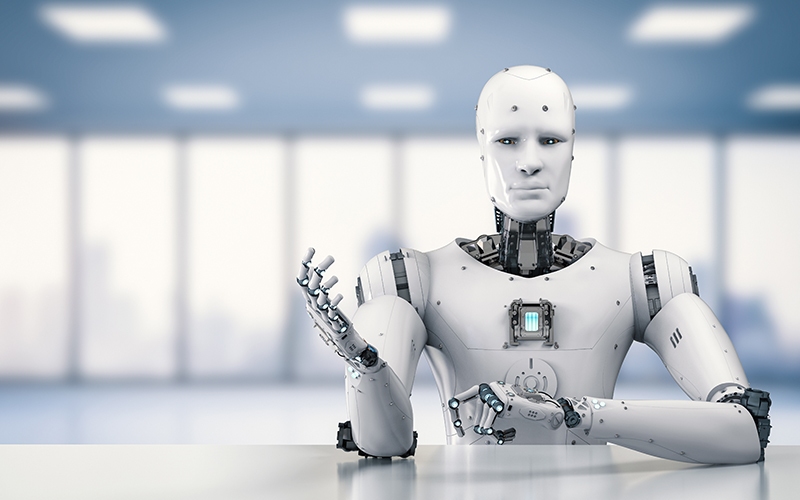Customer Service
Contactless service centers will never be out of touch with the human experience
Voice-based contact centers have long been under threat of being eliminated by the growing use of technology for customer service, or so was the debate. But, as the COVID-19 pandemic rages on, voice-based contact centers have scratched their way back into spotlight. In a world where it’s safest to be isolated at home, contact centers provided that much needed human contact with businesses. The evidence is in the surge of call volumes airlines and hospitality brands witnessed, right after all operations were grounded due to COVID-19.
The following changes, in my opinion, will be for the long haul in the contact center industry:
- Accelerated adoption of digital tools
- People are going to move from command-and-control in office to more analytics-driven style of management
- Hybrid models will dominate. Physical and the virtual world will co-exist
- Artificial Intelligence (AI) and cognitive capabilities will become mainstream
- Increased focus on analytics for performance management in a distributed workforce model
Tech Enabled
Most contact centers had to venture into an unknown territory of addressing customer queries while working at home. The sector is no stranger to work-at-home solutions, but the model seldom found acceptance due to multiple security or system requirements. The parameters of successful customer engagement, however, remain the same – speed and accuracy of grievance redressal.
A few of the organizations are deploying AI to fill the vacuum in service delivery by plugging the loopholes of longer hold times, non-resolution of issues, network problems, and so on. But unlike any other crisis, COVID-19 requires an overhauling approach, which will also make room for the new learnings gathered from the pandemic situation.
Considering we are hyper-aware of touchable surfaces now, services of future will have to account for it and build contactless operations with more voice and machine vision interfaces. Machine vision interfaces are already in use today, such as to apply social media filters or for contactless checkout at stores.
Clearly, contact centers are not new to technological innovations. Chatbots were well on the way to become commonplace, while automation featured prominently in back-end operations. A few contact centers also started routing calls through the cloud with the integration of Machine Learning (ML) and Natural Language Understanding (NLU) for seamless contactless service.
But technology on its own may not be sufficient to transform the industry. Rather, humans and machines working in tandem is how the future might look. Especially in current times, the role of a human customer care agent cannot be ruled out entirely. The agents must be considered critical, albeit in a distributed workforce model.
The Humanoid Experience
The new model of operations, with majority of the agents having to attend to user calls from home, however, has increased hold times and impacted the quality as well as accuracy of resolution. Deploying technology at this juncture, to enhance, not replace the agents in delivering an engaging human experience, is the simple solution. Contact Center as a Service (CCaaS), for instance, can help companies quickly scale up operations in a remote working environment. The call management platforms can be integrated with cloud telephony, enabling call routing to mobile phones or to smartphone applications, at the same time accounting for the risk of governance, security, and compliance.
Self-service conversational bots can be trained and leveraged for specific knowledge bases. The bots can enhance consumer experience by prompting suggestions in real-time during a call, while the analytics integration can help the agent identify customer sentiments and objectives precisely. ML algorithms, on the other hand, can pull out the entire customer journey for the agents, or it can divert calls to the relevant human agent, depending on the nature of query. The result: faster resolution of issues, shorter wait times, and an engaging customer interaction.
Deploying such a human-ware solution successfully will require a concerted effort:
- Let customers feed you back: Capturing consumer feedback and then incorporating the conclusions in the solutions is critical. To build a consumer-centric system, it becomes all the more important to hear the consumer.
- Training: Along with user feedback, the opinion of your employees using the overhauled systems, is equally important. Identify such employees for their feedback and also train them in using the systems effectively. Training the agents in softer skills of communicating with the user is also important.
- Leverage data: Reading data effectively can help organizations in decision making, by extracting valuable consumer insights. The use of data and analytics is critical as it can help organizations identify what works well and what does not.
- Management: The style of management will have to be tweaked in a distributed workforce framework, to make it more knowledge-based, and less hierarchy-based. Performance parameters will also have to account for such a change, because the command-and-control form of people management will fall flat in remote working environment.
Even though the movement towards contactless service centers started much before COVID-19 struck, the crisis has accelerated the digital journey. We are reimagining customer service in ways we never imagined, by keeping the customer at core. Automation and cognitive experience, as a result will come into sharp focus to enhance human work. While digitization will increase, hybrid models, where machines and humans co-inhabit, will be the future.






